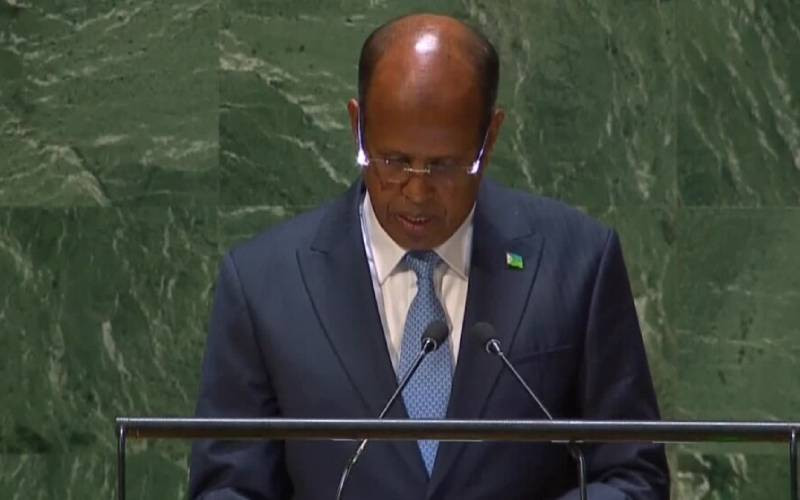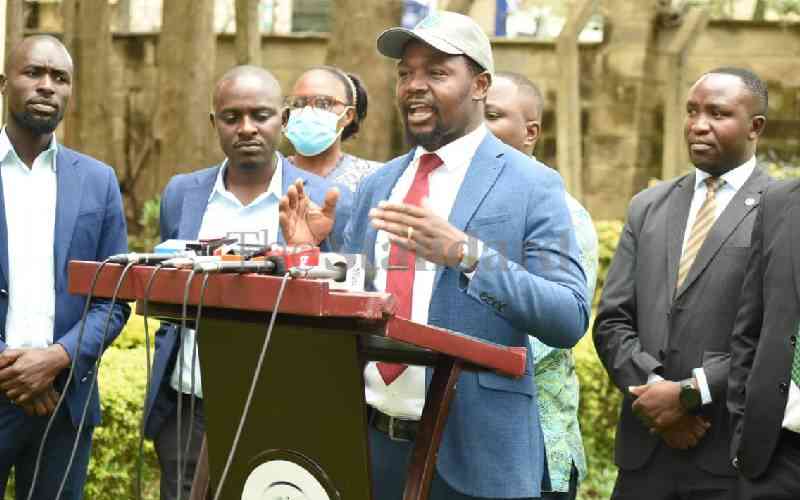By PAUL MWANGI
Two important events in the past few weeks have reignited the debate on land justice from the embers of this year’s election. First was the release of the final report of the Truth, Justice and Reconciliation Commission, and then last week’s acknowledgment by the British government of torture and ill-treatment of Mau Mau freedom fighters.
Beyond the payout for torture, it is not unlikely that there will be a renewal of demands for land justice.
The British colonial and protectorate administrations failed to recognise customary land tenure systems. By 1914, nearly 2 million hectares of land had been taken away from Kenyan Africans. By 1960, European settlers occupied some 3 million hectares of land held on leases and freehold tenure, which the Africans were demanding.
Thus in order to safeguard their possessions in the event of a power transfer, the colonial government initiated a settlement plan for the Africanisation of the so-called White Highlands as well as an elaborate scheme of constitutional and statutory guarantees of property rights.
In early 1964, President Jomo Kenyatta ordered that all colonial farmhouses, together with 100 acres surrounding them, be reserved for ‘prominent people’ alongside poor farmers in the settlement schemes. From 1965, private companies started buying land, too, further dispossessing small-scale farmers.
These purchases have been at the centre of violent conflicts at election time. Many were forcibly evicted in 1992, 1997, 2002 and 2007.
It is estimated that during the 2008 post-election violence, over 140,000 households comprising 663,921 individuals were displaced from their land. Many are yet to be resettled.
Civil wars, conflicts, migration and involuntary displacements are only symptoms of increasing land disputes involving direct confrontation over access to key natural resources by capitalist forces — domestic and external. Those conflicts result from competition to access land and secure its use, as well as struggles to reclaim alienated land rights entrenched in extensive mineral and other natural resources of exchange value to global tourism, forestry and bio-technology markets.
Binding document
Land justice remains one of the most vexed public debates in Kenya. It is often emotive, divisive and confounding. Access to and control of land has been concentrated among elites in the face of a growing population and the scarcity of fertile land. Further, small-scale farmers do not feel secure about their holdings in the face of growing claims over land as well as a clash of land tenure regimes arising from colonial and post-colonial interventions in shaping property rights.
Reform measures, such as repossessing illegally or irregularly acquired public land as recommended by the Ndung’u Commission on Illegally/Irregularly Allocated Land, have remained problematic. Efforts by the anti-graft agency to repossess such land have suffered a similar fate.
These efforts are frustrated by legal hurdles arising from the sanctity of first registration of title, irrespective of how that title was obtained. Efforts to reclaim the Mau Forest water towers turned into a major political battle.
Although the Tenth Parliament enacted the National Land Policy in December 2009, much of it is yet to be implemented. The National Land Policy made several key recommendations aimed at solving land problems in Kenya. Some of these recommendations were incorporated into the Constitution promulgated in 2010.
A National Land Commission is in place and mandated to manage land on behalf of national and county governments, investigate claims of historical and present land injustices in order to recommend appropriate redress, rationalise existing land laws, and create laws to facilitate review of all grants or dispositions of public land to establish their legality.
Stay informed. Subscribe to our newsletter
Kenya can look to the continent for inspiration. African leaders have made important steps in developing and adopting different policies and standards, but these have certain limitations in improving people’s lives.
For example, the ‘Land Policy in Africa: a Framework to Strengthen Land Rights, Enhance Productivity and Secure Livelihoods’ adopted in 2009 by African heads of State and government is not a binding document and does not serve as a standard model to all member states.
To actualise these standards, there is need for initiatives — led by the people themselves — to support small-scale farmers, the landless, and indigenous people, to mobilise to oppose any attempts to make life a commodity and instead propose other ways to organise alternative relationships with “nature on Earth based on agrarian reform, food sovereignty and peasant-based agro-ecology”.
A strong and vibrant national platform to inform and empower the public to demand the realisation of rights and freedoms enshrined in AU instruments is necessary.
Land lost through past injustices should be restored, land tenure system reformed to provide security for ownership as well as access and use for the disadvantaged and the poor. Institutions must provide for political and administrative structures and processes to make decisions on land resources and resolve conflicts.
Today, Fahamu Networks for Social Justice is hosting a national conference of social movements and other actors in Kenya to review the implementation process of the National Land Policy. The conference aims to take stock of the land justice struggle in Kenya, looking at the different fronts such as the struggles for policy changes, grassroots, youth and women’s struggles.
It seeks to highlight and amplify citizens’ voices on land injustices in Kenya with the objective of bringing into force the policy changes that address land distribution, tenure and use. Hopefully, this meeting can spark a conversation to enable Kenyan citizens to enjoy the rights and standards enshrined in different AU instruments.

Writer works for Fahamu Networks for Social Justice.
 The Standard Group Plc is a
multi-media organization with investments in media platforms spanning newspaper
print operations, television, radio broadcasting, digital and online services. The
Standard Group is recognized as a leading multi-media house in Kenya with a key
influence in matters of national and international interest.
The Standard Group Plc is a
multi-media organization with investments in media platforms spanning newspaper
print operations, television, radio broadcasting, digital and online services. The
Standard Group is recognized as a leading multi-media house in Kenya with a key
influence in matters of national and international interest.
 The Standard Group Plc is a
multi-media organization with investments in media platforms spanning newspaper
print operations, television, radio broadcasting, digital and online services. The
Standard Group is recognized as a leading multi-media house in Kenya with a key
influence in matters of national and international interest.
The Standard Group Plc is a
multi-media organization with investments in media platforms spanning newspaper
print operations, television, radio broadcasting, digital and online services. The
Standard Group is recognized as a leading multi-media house in Kenya with a key
influence in matters of national and international interest.









